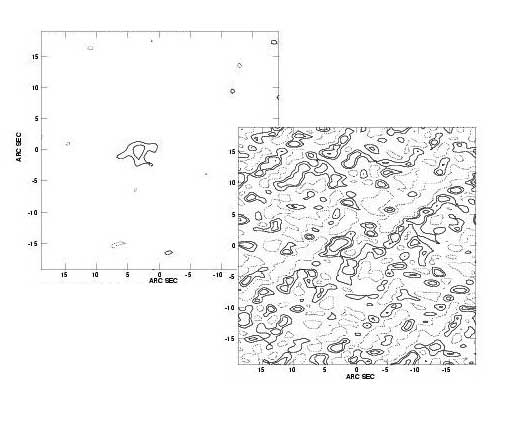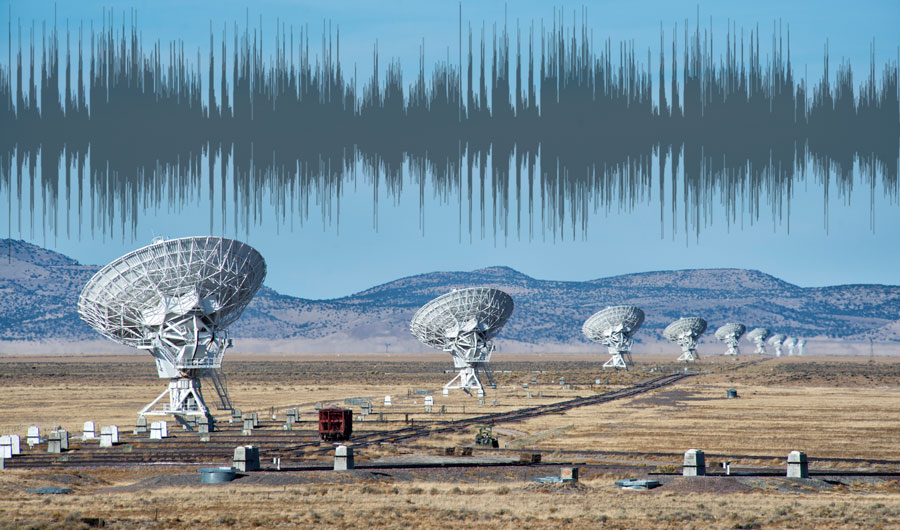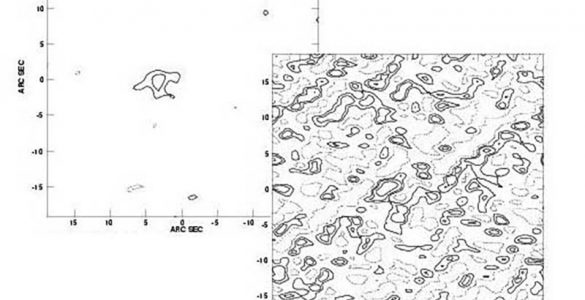Since the 1930s, when Karl Jansky detected the first radio signals from space, astronomers have used radio telescopes to explore the Universe by observing radio waves emitted by a vast range of celestial objects. Radio waves make their way to Earth in longer wavelengths and with less energy than other kinds of light, making these faint radio signals susceptible to electromagnetic interference from cell phones and satellites. For radio astronomers, one of the most difficult dilemmas is how to mitigate interfering signals from electronic devices–the ones situated in space and the everyday gadgets used on Earth. As the Very Large Array is busy scanning the sky, in its second of a seven-year radio sky survey, VLASS scientist Amy Kimball writes about these day-to-day challenges in managing one of the largest-ever radio sky surveys.
One of the most complicated issues to be carefully accounted for in scheduling observation time, on the Very Large Array, is the presence of Radio Frequency Interference, or RFI, which refers to interfering radio signals from Earth-based sources or orbiting satellites. For example, cell phones, when they are in a certain range, cause interference for radio observations. These signals are so strong, compared to astronomical sources, that a single cell phone turned on can wreak havoc on a VLA observation, rendering certain observing frequencies virtually useless! (It’s for this reason that we ask all visitors coming to the VLA to turn off their cell phones when they are visiting the telescope site). Radio astronomers observe celestial objects in a wide range of frequencies for VLASS, and the strongest sources of interference just happen to be the geostationary Sirius/XM satellites. I appreciate having satellite radio available when driving through the southwest desert, but, on the other hand, it makes my role as VLASS scheduler extremely complicated!
There are two different locations of Sirius/XM satellites in the sky. Their radio signal is so strong that we must take care not to point anywhere within a radius of about 15 degrees from either satellite location. This means that there is a 30-degree-wide strip of sky (nearly one-third of the sky visible from the VLA) that passes close to the satellites every day. Those regions of the sky must be scheduled for observations when they are low to the horizon: shortly after they rise in the east before that patch of sky rotates close to the satellites, or shortly before they set in the west. In reality, the map of positions where the VLA can point to avoid the satellite RFI is fairly complex. We have performed “sweeps” of the sky in order to measure the level of interference for different observation directions with the VLA.

On the left is a VLA image of a star. On the right is the VLA’s image of the same star when a satellite was passing within 25 degrees of the star’s position on the sky. The star’s data are swamped by the satellite’s transmissions. Credit: G.B. Taylor, NRAO/AUI/NSF.
By planning and plotting, we can circumvent where we know these satellites are in the sky— they are always in the same sky direction with respect to the VLA, by definition, because they are in geosynchronous orbits (which means the satellites have a period of rotation synchronous with that of the Earth’s rotation).
For more information about the Very Large Array Sky Survey and satellite traffic, listen to this StarDate podcast from March 2019.







